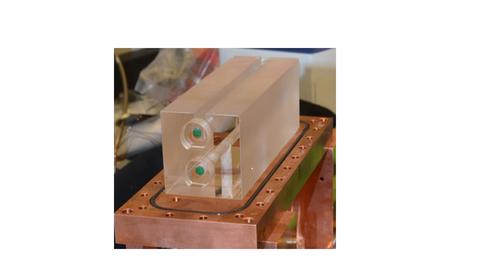Deformometer for Determining Deformation of an Optical Cavity Optic
Patent Number: 10,816,325
Problem
Patent description
NIST has invented a pulse quantizer that uses arrays of one or more Josephson junctions to create a pulse voltage output that is immune to differential pulse timing shifts. When the output pulse patterns are used to encode a waveform, for example, the waveform will be free from pulse timing shifts that degrade the accuracy and signal purity of the synthesized waveform.
The figure below shows a superconducting waveform synthesizer wherein panel (A) shows an input w[n] that is a three-level deltasigma encoding (226) of a target output waveform. Number 228 shows the bitstream. Panel (B) shows a pattern generator (218) that synthesizes a series of three-level current pulses based on the programmed digital encoding. Panel (C) shows input current waveform (216) Iin(t) that is transferred to a cryogenic superconducting JAWS chip that contains an array of Josephson junctions (214) (symbolized by an “X”) and that transforms the input current pulses to output voltage pulses with quantized area (210). Panel (D) shows output waveform Vp(t) (224) that includes a train of JAWS-synthesized pulses (212.1 and 212.2) and is measured at room temperature using a digitizer or spectrum analyzer or is used as input to a device under test.

Invention
A superconducting waveform synthesizer produces an arbitrary waveform and includes an encoder that produces a bitstream; a pattern generator that produces a current bias pulse from the bitstream; a Josephson junction that produces a quantized output pulse from the current bias pulse; and a converter that produces an arbitrary waveform from the quantized output pulse. A process for producing an arbitrary waveform includes producing a bitstream; producing a current bias pulse from the bitstream; communicating the current bias pulse to a Josephson junction; producing, by the Josephson junction, a quantized output pulse from the current bias pulse; producing a quantized output pulse from the current bias pulse; and producing an arbitrary waveform from the quantized output pulse.
Features
This bipolar realization with two arrays is a more practical and useful implementation because it will increase the output voltage and eliminate DC offsets from the output signals.

